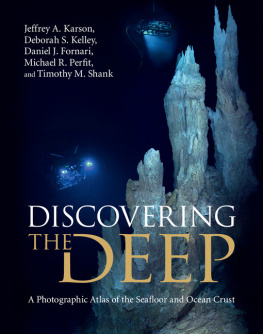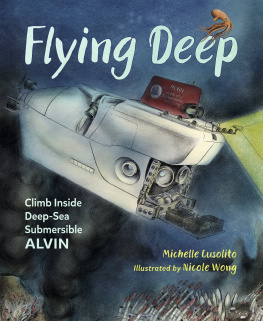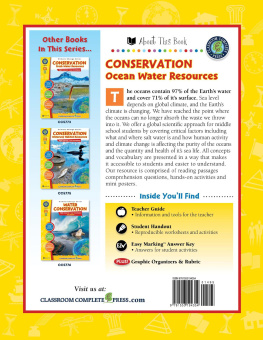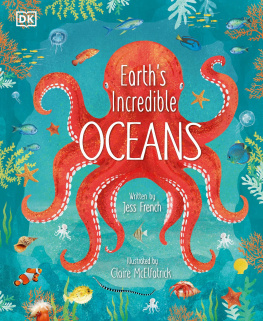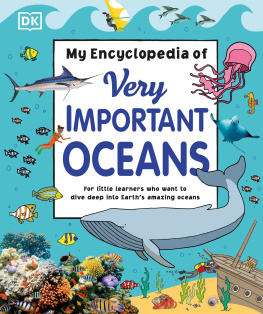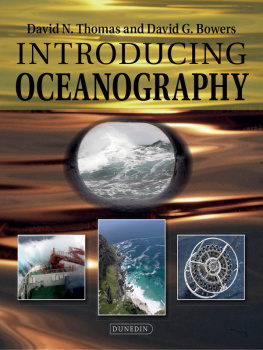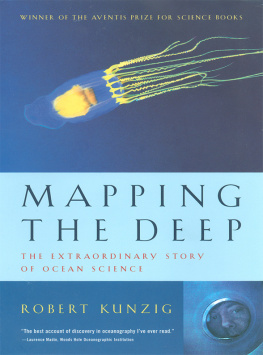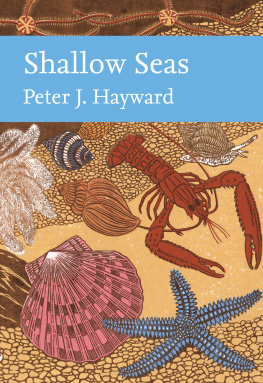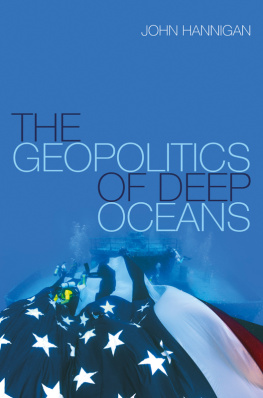Discovering the Deep
A Photographic Atlas of the Seafloor and Ocean Crust
The deep oceans and global seafloor are truly Earth's last frontier. They remain largely unexplored, yet are critical to our survival on this planet. This magnificent volume transports you to volcanoes, boiling hot springs, and fault zones in mountains a mile beneath the ocean surface, where bizarre landscapes host exotic life forms that rival the most imaginative science fiction.
Illustrated throughout with spectacular color photographs, the book starts with a historical summary of seafloor exploration and the developing technologies used to study this extreme environment. It then presents a series of chapters that describe the distinctive geological components of the Earth's ocean floor and the myriad environments found along mid-ocean ridges where new crust is created. It is here that discoveries of chemosynthetic biological communities revolutionized our ideas about the origins of life and the potential for life's existence elsewhere in the Universe. The authors provide elegant explanations of how the various geological and hydrothermal features of the seafloor are formed through physical, chemical, and biological processes, and present comparative examples from places where the seafloor is exposed on land.
Discovering the Deep is an indispensable reference for researchers, teachers, and students of marine science, and a visually stunning resource that will enlighten and intrigue oceanographers and enthusiasts alike. A suite of online resources, including photographs and video clips, combine with the book to provide fascinating insights into the hidden world of seafloor geology and biology using the latest deep-sea imaging and geological concepts.
JEFFREY A. KARSON is Professor of Geology in the Department of Earth Sciences at Syracuse University and a Fellow of the Geological Society of America. He investigates the interplay of magmatic construction and mechanical deformation of extensional and transform fault environments from ophiolites, contemporary oceanic crust, Iceland, continental rifts, and continental margins. Professor Karson has participated in numerous field projects and seafloor research cruises worldwide. He is the author or co-author of over 150 publications on seafloor spreading and related phenomena.
DEBORAH S. KELLEY is a Professor in the School of Oceanography at the University of Washington and also Associate Director of Science for the first US underwater high-power, high-bandwidth cabled observatory, funded by the NSF. She is the former Chair of the UNOLS Deep Submergence Science Committee. Her research examines the linkages between submarine volcanoes, underwater hot springs and how they support life in the absence of sunlight. Dr. Kelley has participated in over 35 blue water cruises routinely using robotic vehicles, and has been on over 50 Alvin deep-sea submersible dives, to depths as great as 4000 meters.
DANIEL J. FORNARI is a marine geologist and Senior Scientist at the Woods Hole Oceanographic Institution (WHOI). He was the first Chief Scientist of Deep Submergence at WHOI, a past Director of WHOI's Deep Ocean Exploration Institute (DOEI), and was a Chair of the Ridge 2000 Program, a NSF-funded national program studying mid-ocean ridges. Dr. Fornari is the author or co-author of over 100 research publications and has participated in over 100 research cruises and as many dives in deep-sea submersibles. His research focuses on volcanic and hydrothermal processes along the global mid-ocean ridge, using a variety of surface and deep-towed sonar systems, submersibles, ROVs, and AUVs.
MICHAEL R. PERFIT is Professor of Geological Sciences at the University of Florida, where he has received several awards for excellence in teaching. He has co-authored more than 100 scientific publications on volcanism and magma genesis at oceanic spreading centers and seamounts. Dr. Perfit has participated in 30 oceanographic research cruises and taken more than 35 dives in Alvin . He has served as the Chair of the Deep Submergence Science Committee, and is also a Fellow of the Geological Society of America and the American Geophysical Union, and a Trustee of the Consortium for Ocean Leadership.
TIMOTHY M. SHANK is an Associate Scientist in the Biology Department of the Woods Hole Oceanographic Institution and Director of WHOIs Ocean Exploration Institute. His research focusses on ecological and evolutionary processes that affect ecosystem structure, faunal evolution, and biodiversity in the deep sea. Dr. Shank has conducted more than 57 scientific expeditions, using a wide variety of submersibles, ROV and AUV systems (including more than 50 Alvin dives). He is currently the Director of the Hadal Ecosystems Studies Program, pioneering the first research use of the full-ocean depth hybrid ROV ( Nereus ) in the deepest trenches.
Praise for Discovering the Deep
Though it's fashionable to say we know little about the mysteries of the deep, this book shows the vast wealth of understanding that pioneering researchers have already gleaned, with their probing sound waves, persistent robots and courageous submariners. This is the book I wish Id had on my eight deep ocean expeditions, to better understand the wonders I was gazing upon. A must-own for anyone in the ocean sciences, and for those simply curious about what lies down there in the most remote realm on our planet.
James Cameron , explorer and film-maker
Discovering the Deep will open your eyes to the largest and most unexplored region on Earth the global Mid-Ocean Ridge. My own introduction to the Mid-Ocean Ridge began with the FAMOUS Expedition to the Mid-Atlantic Ridge in 1974, and this beautifully illustrated and comprehensive account shows how far we have come over the last 40 years in our understanding of this fundamental tectonic feature of the Earth and the technology required to investigate it. Not since Bruce Heezen and Charlie Hollisters classic book, The Face of the Deep , first published in 1971, have we seen such a comprehensive photographic atlas of what lies in the hidden depths of the sea.
Dr. Robert D. Ballard , President of the Ocean Exploration Trust
Discovering the Deep is an exquisite synthesis of the complexity of natural processes, the beauty of oft unseen environments, and the critical scientific discoveries of our recent past. To read this volume is to become an enlightened traveler into the fascinating realm of the seafloor and ocean crust. No student of the natural world should be without this magnificent atlas of our planet's richly structured deep ocean environment.
Dr. Kathryn D. Sullivan , Under Secretary of Commerce for Oceans and Atmosphere and NOAA Administrator; former NASA astronaut

